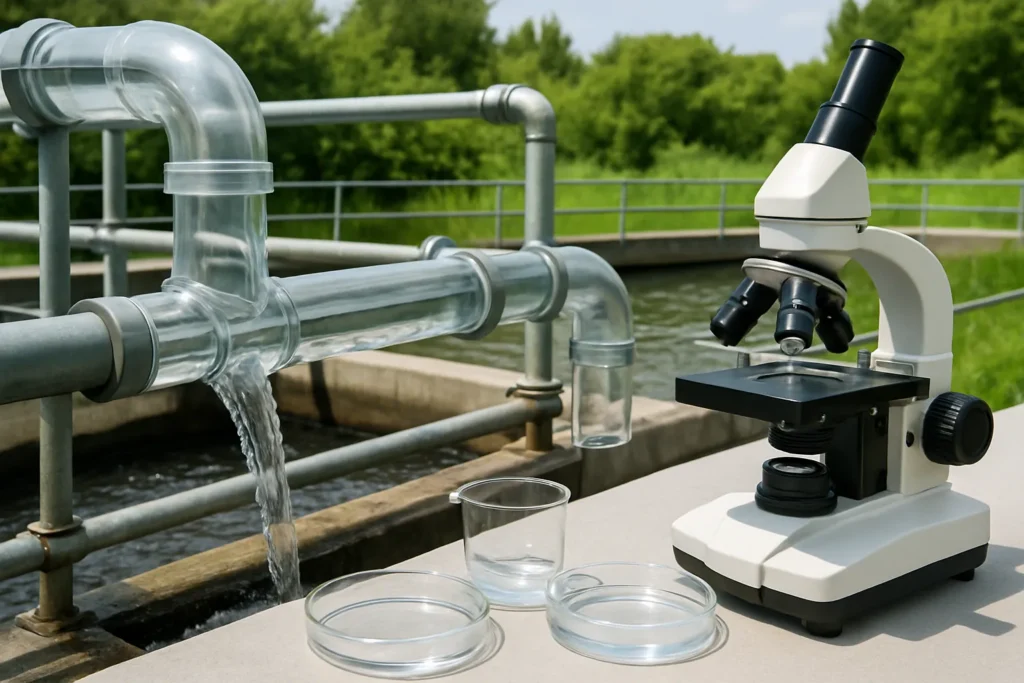Uncovering Outbreaks Beneath Our Feet
Houston made public health history in January 2025 when scientists detected the measles virus hiding in plain sight—right in the city’s wastewater. Days before doctors logged the first clinical cases, researchers from Baylor College of Medicine, the University of Texas Health Science Center at Houston, the Houston Health Department, and Rice University flagged the silent danger via microscopic clues flushed from homes, schools, and businesses. The stakes could not be higher as measles surges across Texas and the nation, turning once-defeated illnesses into renewed threats.
What does it mean when a virus is caught by scientists’ sequencers before doctors catch it in their clinics? For one thing, it shakes up the way we think about protecting communities—particularly as outbreaks increasingly threaten those left exposed by waning vaccination rates, policy failures, and medical misinformation spread by conservative figures. Houston’s experience offers a timely cautionary tale and a technological beacon for national outbreak preparedness.
According to the CDC, measles cases in the U.S. have reached alarming levels in recent years, with 2024 already seeing clusters that dwarfed pre-pandemic norms. These resurgences often originate in communities with lower vaccination rates—a direct result of politicized resistance to life-saving science. Wastewater surveillance programs, like the one advanced by Houston’s research coalition, reveal threats before they turn deadly, buying precious time for public health intervention.
A New Era in Disease Surveillance: Science Fights Policy Gaps
Houston’s research team didn’t just stumble upon the measles virus in a lab sample; they decoded genetic material lurking in two of the city’s major sewage treatment plants—facilities serving more than 218,000 residents. The experiment was no lucky accident: 821 wastewater samples taken over 31 previous months had come up negative. But as cases ticked up statewide, the virus appeared in two samples dated January 7, 2025—ten days before clinicians identified and reported two infected travelers in the same part of the city.
Dr. Anthony Maresso, co-corresponding author and Joseph Melnick Endowed Chair at Baylor College of Medicine, compared this new surveillance technique to a weather forecast for public health. “It’s like using meteorological data to anticipate dangerous weather conditions,” Maresso told the American Journal of Public Health. The early warning enabled by wastewater sequencing, he argued, allows public officials to prepare for outbreaks before the first symptomatic patients walk through hospital doors.
What makes this approach transformative is its non-invasive, comprehensive scope. Instead of waiting for a surge in clinic visits, public health teams now have a sentinel system peering into the population’s collective health, capturing viral mutations, transmission patterns, and outbreak hotspots. This is a sharp contrast to symptom-based approaches, which can lag weeks behind an outbreak’s beginnings—especially for diseases with variable incubation periods or mild early symptoms.
Public health experts point out that this moment of scientific innovation isn’t happening in a vacuum. It’s unfolding as conservative state legislatures in Texas and elsewhere roll back public health funding, question the value of vaccinations, and undermine trust in expert-driven policy. Dr. Rochelle Walensky, former CDC director, warned recently in JAMA that such erosions turn “manageable outbreaks into public health emergencies,” especially when early detection tools are ignored or underfunded.
“We cannot afford to let ideology compromise our defenses against preventable disease. Wastewater surveillance gives society a fighting chance to unmask outbreaks—if leaders choose science over short-term politics.”
The Houston project’s robustness also came from rigorous inter-institutional collaboration. After the initial findings, health department teams used confirmatory PCR tests—removing any doubt that the signal was a fleeting lab error. This layered approach is precisely what’s needed to prevent the kind of policy missteps and delayed responses that have hampered recent pandemic containment efforts.
Want to track viral activity yourself? In a step toward transparency and community empowerment, researchers have launched a publicly available dashboard (TEPHI Early Detection), bringing real-time genomic monitoring to anyone with internet access. This digital tool aims not only to inform, but to galvanize action from local communities and their elected officials.
Beyond the Test Tube: Progressive Solutions in an Era of Risk
Houston’s wastewater breakthrough isn’t just a tale of scientific wizardry. It’s an urgent call for investment in egalitarian, community-centered public health. As outbreaks flare across Texas—especially in under-resourced West Texas cities—the efficacy of surveillance hinges on local and federal officials embracing innovation, funding research, and building trust through clear communication.
The very existence of this kind of early-warning system highlights the chasm between what science can achieve and what policymakers are sometimes willing to support. Will leaders on the right keep chipping away at the public institutions that make early detection possible? Or will this evidence push even ideological opponents to recognize that infectious diseases don’t check party affiliation before striking?
History offers sobering lessons. In 2019, New York faced a disastrous measles outbreak largely centered in a community with low vaccination coverage—a crisis that took months to control and cost millions in emergency response. According to a report by the National Academies of Sciences, Engineering, and Medicine, delayed detection and response remain two of the deadliest vulnerabilities in our current public health system.
Public health is a collective imperative—one that cannot survive on wishful thinking or partisan posturing. Investing in rapid detection and open data, as seen in Houston, arms every community with the information it needs to protect itself, especially the most vulnerable.
As new viruses and old threats continue to cross borders and boundaries, science offers us the chance to see—literally and figuratively—what’s coming, if we are willing to look. The Houston model is not just proof of concept. It’s an invitation: to demand stronger, smarter, and more equitable public health for all. The question for every city and state isn’t whether an outbreak will next appear in their wastewater, but whether they will be ready to act when it does.

